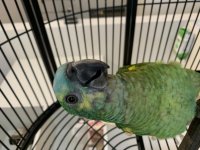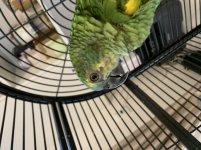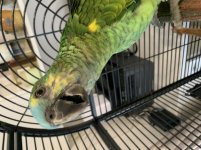I have had my blue fronted amazon for only a couple of weeks, and he is 3 months old. I have realised that his eyes dont look like other Amazons i have seen, and instead he doesnt have much surrounding feathers and its kind of greyish instead of white. Im not sure if this is because hes a baby or not.
Here are some pictures:



Here are some pictures:



Attachments
Last edited by a moderator:


